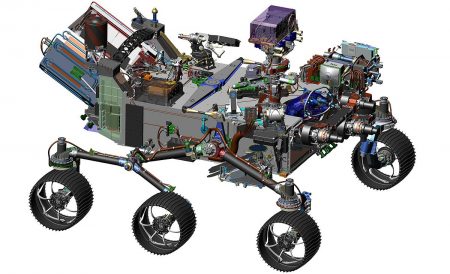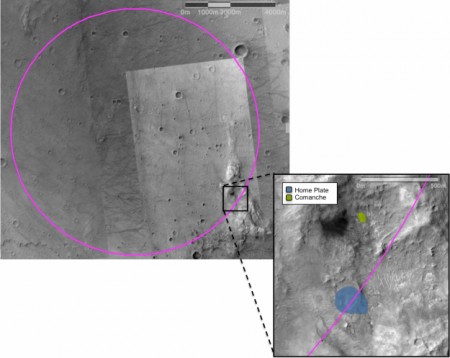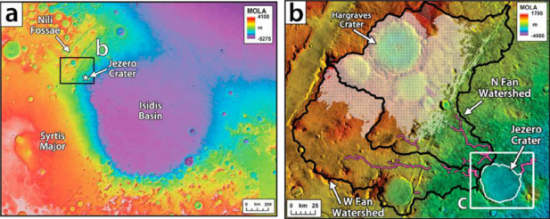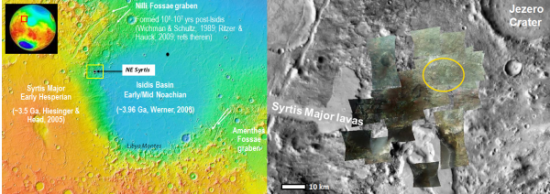February 16, 2017 – The successor to NASA’s Curiosity rover is Mars 2020, a mission that seeks locations on the Red Planet where life may exist or did in the past. Using a platform and form factor almost identical to Curiosity, but with better wheels, and including the SkyCrane descent and landing system that worked so effectively, the rover is expected to reach the planet in 2020 where it will attempt to achieve four objectives:
- Study the geology of Mars with the purpose of defining periods of habitability in the past.
- Search for preserved biosignatures.
- Obtain and cache relevant samples on board the rover which can be recovered in a future Mars mission.
- Demonstrate the ability to harvest oxygen from the Martian atmosphere to prepare for future human missions to the planet.
Mars 2020 would be more intelligent than Curiosity, able to make its own decisions on where to go across the surface of the planet. It would target rocks formed in Mars’ past that showed signs of biosignatures, that is, past microbial life. It would also study Martian geology to better understand the past Martian climate while assessing that in the present. And its oxygen harvesting effort would prove that future missions to Mars would not have to carry a surplus of resources for life support as well as fuel. With oxygen harvesting, future human missions would have the means to be self-reliant in these two important areas.
Having established the objectives for Mars 2020, the next step involved figuring out where to go. Originally eight sites were picked as candidates. But at a February 8, 2017, meeting the eight were cut down to three. One of the following sites will be determined the winner.
- Columbia Hills – this site, near the Gusev Crater, was visited by Spirit, one of the two rovers sent to Mars prior to Curiosity. Spirit identified the site as having once been a source of mineral springs feeding a shallow lake.
- Jezero Crater – the site is at the western edge of the Isidis Basin where a lake formed at least twice in Mars geological past.
- Northeast Syrtis – also in the Isidis Basin, this volcanic site is believed to have been the location where subterranean or surface water came into contact with erupting minerals.
The new nickname for Mars 2020 is Odyssey. Named after one of Homer’s two epic poems, this robot lander may finally answer the question, “does life exist elsewhere in the Universe?” It is not the first time on going to Mars that we have posed it and tried to get an answer. The Viking landers‘ experiments back in 1976 had some of the scientists at NASA convinced they had discovered chemical organics, the proof of past or present life on the planet. But since Viking, no repeat test has been done. The year 2020 may finally give us that proof.



















